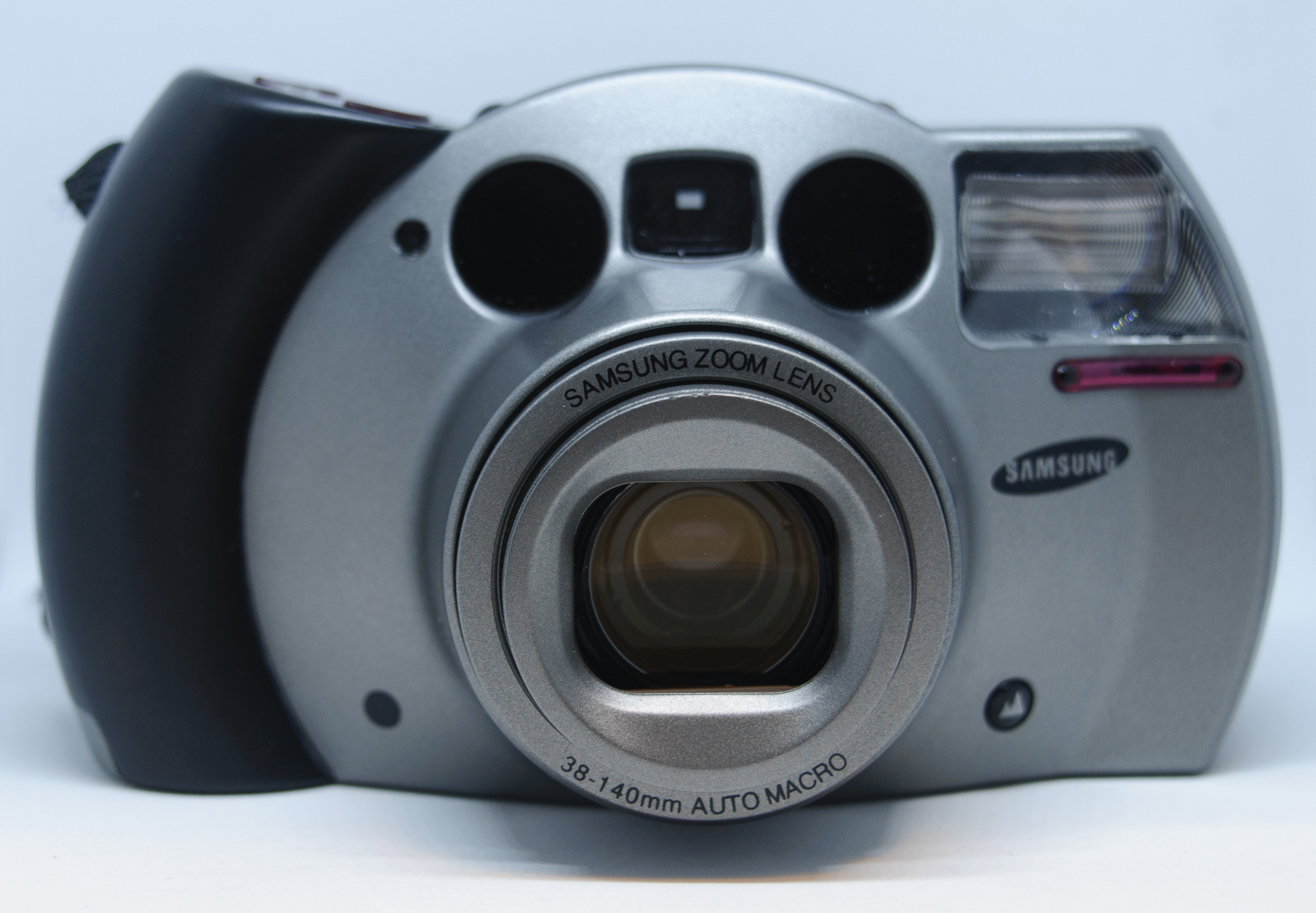This Porsche-designed camera has to be my ugliest, but can it take beautiful pictures?

Massive hideous lump
Samsung ECX1
Camera: £1.00
Postage: £1.33
Total: £2.33
In 1994, £340 was a lot of money, about £640 today. Most of my other cameras which have an adjusted cost that high are fancy SLRs, so this compact automatic would have to have a very long spec sheet to compete with them. Well, it certainly does!
It’s big for an automatic, which is largely because of the styling – I think they maybe wanted it to be like a steering wheel but it is not very comfortable to hold. It does cram in a lot though, spec wise it has:
- Autofocus (single and multi-beam and manual focus)
- Focus lock
- Autoexposure
- Zoom (including step zoom) 38-140mm
- Macro mode
- Built-in flash
- Panorama mode
- Viewfinder diopter adjust
- Mid-roll rewind
- Single and double self-timer
- Landscape (infinity focus) mode
- Snap-shooting mode (fixed focus)
- Remote control (not supplied)
- Date imprinting function
- Exposure compensation
- Fill, backlight and red-eye flash
- Fuzzy zoom
- Portrait zoom
- Continuous shooting
- Multi-exposure shooting
- Interval shooting (Time lapse, 10s to 60m)
- Bulb mode (plus programmable 1s to 60s long shutter and flash sync)
- Auto DX coding from 50-3200 (100 as default)



Spec sheet as long as your arm
A lot of those are pretty gimmicky and only useful in very special circumstances, multi-exposure shooting or double self-timers aren’t things you are going to use every day. In addition, some of those modes only work on their own and cannot be combined with others, ie: a time lapse with a long shutter. However it does its best to do pretty much everything you would want from a compact camera plus a few things you would not expect.
The fuzzy and portrait zooms are effectively image correction tools, years ahead of their time. Instead of manipulating a digital image like modern cameras do, the ECX1 gets the best balance of contrast or centres on a face by using the zoom intelligently before the picture is shot.
The time lapse is a very unusual feature, as is a bulb mode on an electronic camera. The programmable bulb mode is exceptionally rare – where you can take a long, timed exposure without having to hold the button down. This is a crucial option when taking long-exposure pictures as it elimates the camera-shake caused when touching the camera. It’s just a shame that it doesn’t have manual film-speed entry, as unusual, slow films often don’t have DX-coding on the canisters.












So ugly pics?
Kodak Tri-X 400
Cost: £5.97
Expired: New
ISO: 400
Format/Type: BW negative
Exposures: 36
Processing: £1.99
Full Total: £9.20
Cost per shot: £0.26
My Rating: 7
Kodak Tri-X is a legend of a film. It’s fast enough to shoot in most places but has a very visible grain most noticeable over areas of solid colour, which gives it enormous character.
My best results are very pleasing. There are a few with defects which were probably formed in the developing tank rather than the camera. The images are clear and the grain brings bags of character – somehow miraculously managing to pull out extra contrasty details that a less grainy film would not.
The camera was solid if not an enormous pleasure to shoot with. Its size might keep it out of my favourite cameras bag, but its flexibility would factor in its favour. It does feel a little sterile to use with all the electronics working away, but I might try some long-exposure or time-lapse photos with it to utilise its unique features.
One Comment Add yours